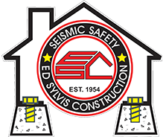Earthquakes occur without warnings. It can cause devastations in mere seconds. In a study conducted, California has a 99% chance of a 6.7 magnitude earthquake. For Southern California, the probability is around 60%. The likelihood is for the next 30 years.
Nobody can forget the 7.1 Ridgecrest earthquake of July 5th, 2019. Its aftermath is a constant reminder that earthquakes can happen anytime. No one knows when a similar quake will hit the populous South California area. The only solution is to be ready before it hits. In this chaos, soft-story buildings are more prone to collapse. Thus, the Los Angeles Soft-Story Seismic Retrofit program got implemented.
What are the soft-story buildings?
A soft-story building is a multi-level structure with a wooden frame. It’s a structure with a weaker first level than the levels above. The first level would generally have an open space. These public spaces often accommodate parking spaces.
Now, this open space is the problem here. Its weak design is unable to carry the weight of the levels above. These structures cannot stand the side to side movement. Thus, the first floor easily collapses during a seismic shift. It’s like a domino effect; once the first level falls, the rest will follow.
Thus, earthquake retrofit is a necessity for soft-story buildings.
Why is seismic retrofit a necessity for soft-story buildings?
- Most of the existing soft-story buildings are from the 1960s onwards. Therefore, it cannot pass the current engineering standards.
- Before 1960, wooden frame structures used cripple walls as support. These walls use weak seismic materials like horizontal wood or Stucco.
- According to building codes before 1938, wooden frame structures weren’t bolted to the foundation. It was not a requirement.
- The tenants are liable to take legal actions against the owners.
Soft-story seismic retrofit is a necessity. It is now the law.
A study by the California Institute of Technology estimated 20,000 soft-story buildings in Los Angeles. San Francisco, on the other hand, has an estimate of 10,800. All these buildings are prone to collapse if a quake hits the Bay area.
In November 2015, the city of Los Angeles signed the mandatory Soft Story Retrofit Law. The program turned into law with the passing of ordinance 1838993 and 184081.
Under this law, all soft-story structures should comply with modern building standards. It was a significant step taken to protect its residents. Besides, prevention is better than cure. Thus, all identified vulnerable buildings had to undergo earthquake retrofit.
Should you seismic retrofit your home?
Confused about which buildings fall under the category? The mentioned guidelines below will be of help:
- It includes the buildings built under building code standards before January 1st, 1978.
- The buildings should have two or more stories with a wooden frame.
- The buildings should have a ground floor garage or parking. It includes any similar open floor space.
Timeline to comply with the law:
The timeline to comply starts as the owner receives the order.
- 2 years – The owners have to submit plans to earthquake retrofit or demolish the structure. If not, show proof of previous retrofitting.
- 3.5 years – The owner has to obtain a permit to begin constructing or demolishing.
- 7 years – complete the earthquake retrofit construction.
Why choose Seismic Safety for soft-story seismic retrofit?
Seismic Safety is one of the longest-serving seismic retrofit companies in Southern California. It is the most respected earthquake retrofit company.
In operation since 1954, Seismic Safety provides perfection in their services. Seismic safety is a team of highly-qualified experts with more than 50 years of experience. They have handled the most complex cases of soft-story retrofitting buildings in Los Angeles. Each property and building has its unique features. Thus, Seismic Safety customizes earthquake retrofitting for each property.
The purpose of most companies is to build buildings according to the current building norms. However, Seismic Safety is not only about that. Seismic Safety’s goal is to provide the best solution at the best price. With Seismic safety, you won’t be asking, “Should I seismic retrofit my home or not?”
If you are worried about the process, don’t be. It is quite simple. All that is needed is a phone call.
The services provided include:
- Seismic Retrofit
- Floor Adjustment
- Repair Foundations
- Replace Foundations
Seismic Safety is a company with a cause.
In 2014, the Earthquake Brace and Bolt (EBB) program started under the California Residential Mitigation Program. It was a joint initiative between the California Earthquake Authority (CEA) and The California Governor’s Office of Emergency services (OES).
The program is an initiative to help lessen the house owners’ potential risk to casualties during an earthquake. Under the program, it offers an incentive of almost $3000. Qualified homeowners can contact Seismic Safety at (626) 791-2300 to set an inspection.
Seismic Safety is a proud member of this program for the past four years. It has been making houses safer for residents in the Bay area. The team at Seismic safety is not a company but one with a cause.
Seismic Safety makes homes safer from casualties of earthquakes. Plus, it also focuses on another integral part. We install and repair foundations or any relating issues.
However, what makes Seismic Safety unique is it studies the property. The team of experts scans the property and fixes any slope issues. Seismic Safety is the one place to go to for all your needs. Our services are available to all, from property owners to real estate agencies.
If you still have not done it. Do not worry. All you got to do is give a call. Do not hesitate and schedule an appointment today. Our team of experts will ensure a smooth and quick solution.
To contact, please check the details given below:
Seismic Safety – Ed Sylvis Construction
1410 North Lake Avenue, Pasadena, California 91104
Phone: 626-791-2300 / 800-300-BOLT (2658)

